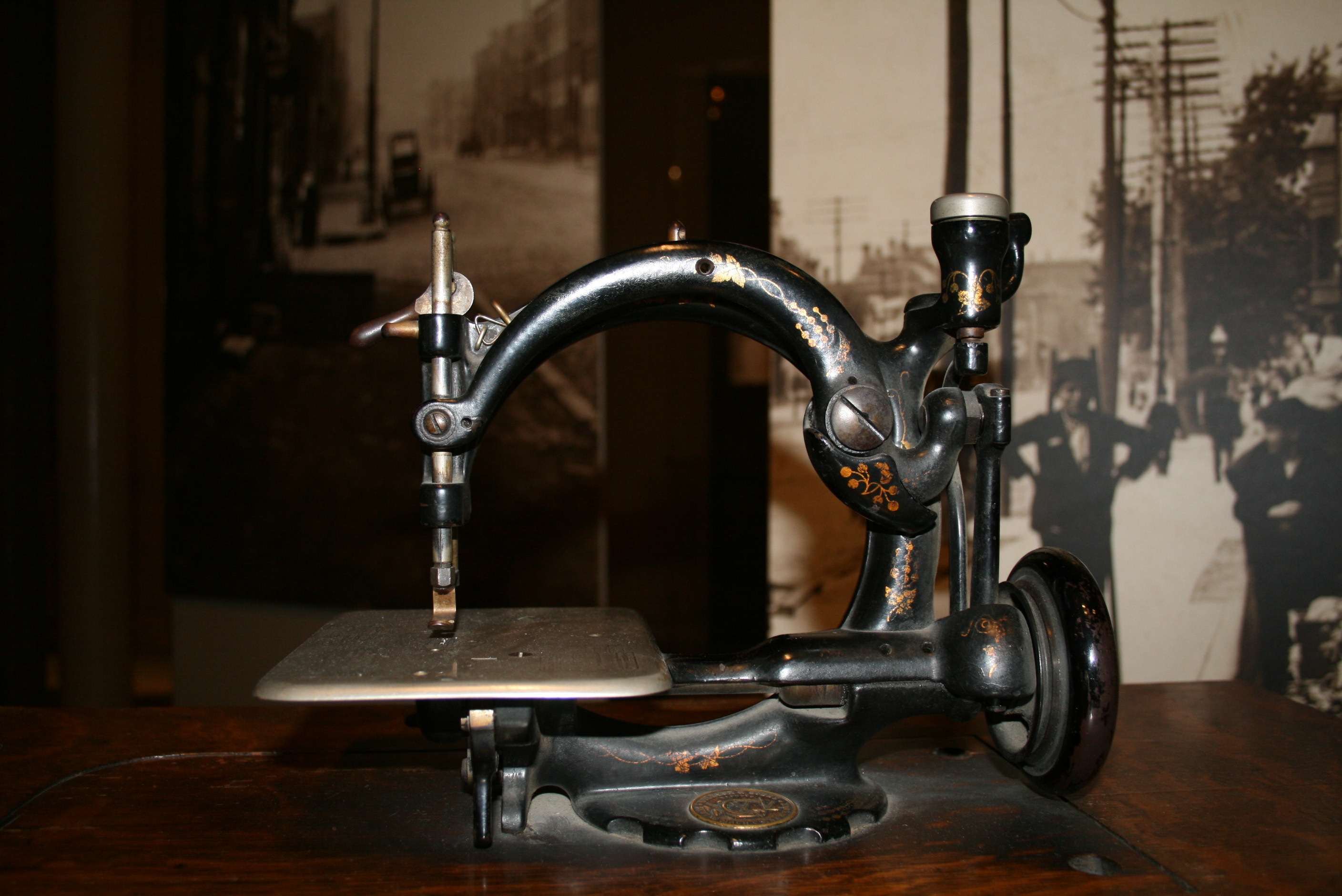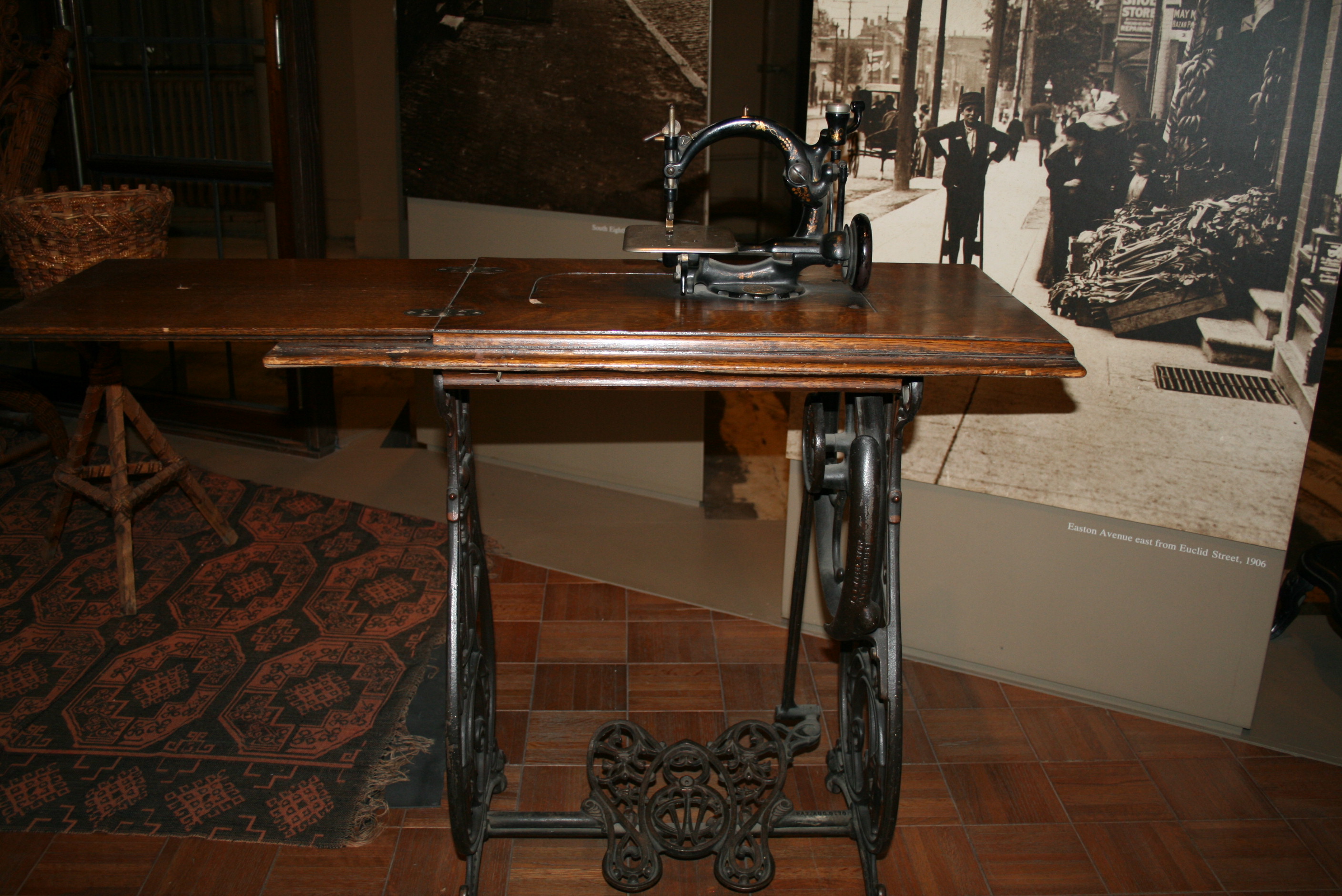JEFF 6089-Wilcox and Gibbs 1870’s Sewing Machine
Through most of human history, women spent thousands of hours not only making clothing for their families, but repairing clothing. Because of the time involved in producing clothing many people dreamed of inventing a machine to do the work of sewing pieces of cloth together. During the early 1800’s, many sewing devices were invented with moderate to poor success. By the mid to late 1800’s, sewing devices were vastly improved and what we now know as the sewing machine came into existence. Our exhibits in the Old Courthouse include an early model of one of these machines. The sewing machine (JEFF 6089) was manufactured in the 1870’s by the Wilcox and Gibbs Sewing Machine Company.
Although Isaac Howe and Isaac Singer are the names most commonly associated with the creation of the sewing machine, other manufacturers made improvements to existing designs and patented their own machines. The Wilcox and Gibbs Sewing Machine Company was founded in 1857 by James Gibbs and James Wilcox. James Gibbs created his machine by making adjustments to existing models to make a better product. His machine used a single thread in making the stitch whereas the others used multiple threads. He also created the revolving loop that pulled the correct amount of thread up through the material to make the next stitch. These were both major improvements to existing machines. Also, their model came with a wooden case. Lastly, their machine was also less cumbersome and less expensive. It was James Wilcox who approached the Providence, Rhode Island company of Browne and Sharpe who were, at that time, makers of clocks, watches and measuring instruments, and asked if they would be interested in producing their machine. They reluctantly agreed. After hitting many snags, everything came together in October, 1858. The first 50 machines were on the final assembly benches and the firm was now able to produce at the rate of 5000 a year. Fortunately, the machine was an instant success and the small company of Browne and Sharpe became a factory, continuing to make the W & G machines for many years. The sewing machine in our collection is a hand and treadle, single thread, chain stitch machine. It is a drop head style machine with an iron open scroll stand with a treadle in the shape of two feet. The head base is made of oak secured by a latch relief underneath the brass plate. The head is painted black.
James Gibbs’s effort to develop a southern domestic market for his sewing machine was unsuccessful. That, plus changing business conditions, forced the company to shift its focus from machines made for home use to machines made for commercial use. The Singer Sewing Machine Company captured a large share of the home market late in the 1870’s, and this, coupled with the Panic of 1873, forced Wilcox and Gibbs to stop manufacturing machines for domestic use altogether. The company developed machines for making straw hats, for sewing knit goods, and, in 1899, the first lock-stitch machine which would perform simultaneous functions such as trimming the edges of fabrics, scalloping, zig-zagging and fringing was available. Creative entrepreneurs like Wilcox and Gibbs helped perfect a machine that would change the lives of homemakers everywhere. The invention of the sewing machine caused a dramatic shift in everyday life, reducing the amount of time needed to make clothes. The sewing machine also enabled the mass production of clothing and the advent of “ready to wear” fashions.


